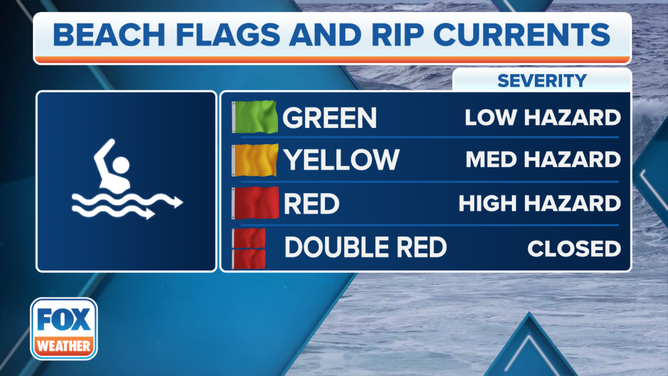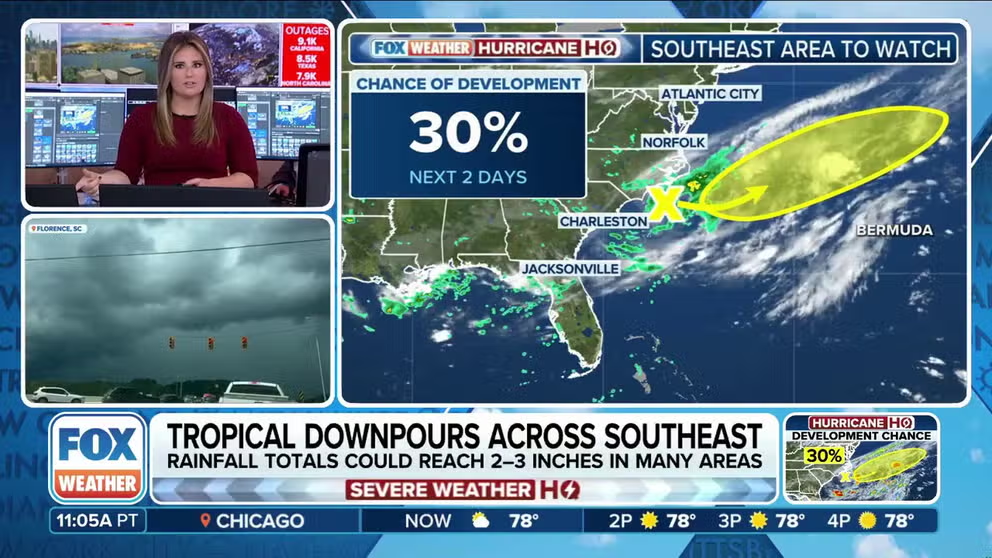Dangerous rip currents to persist for days along mid-Atlantic beaches
Data from the NOAA shows around 22 lives are lost each year in the state due to rip currents and other rough ocean conditions.
Odds are increasing for tropical development along disturbance off Southeast coast
The National Hurricane Center has again raised the odds of tropical development along the Carolina coast as the Southeast faces days of soggy weather.
NAGS HEAD, N.C. – A stalled frontal boundary lingering over the warm waters of the western Atlantic, combined with several disorganized centers of low pressure, is expected to contribute to hazardous surf conditions along a large portion of the East Coast for the foreseeable future.
Depending on the day’s wind direction and incoming swell, beaches from the Jersey Shore southward through the South Carolina Lowcountry could see higher tides and an elevated risk of rip currents, according to forecasters.
"Rip currents can sweep even the best swimmers away from shore into deeper water," National Weather Service forecasters warned. "Dangerous shore break can throw a swimmer or surfer headfirst into the bottom, causing neck and back injuries."
The greatest danger from rip currents typically occurs around low tide, and the threat is expected to persist whether or not a tropical disturbance develops offshore.
Rip currents are powerful, narrow channels of fast-moving water that flow away from the shoreline.
Unlike typical ocean waves, rip currents are often difficult to detect from the beach and can appear suddenly without warning.

(FOX Weather)
RADIOACTIVE WASP NESTS FOUND AT FORMER NUCLEAR WEAPONS SITE
If caught in a rip current, experts advise not swimming directly against the current, which can lead to exhaustion. Instead, swimmers should swim parallel to the shoreline until they’re out of the current’s pull, and then return to shore at an angle.
According to NOAA data, approximately 22 lives are lost each year in the U.S. due to rip currents and other rough surf conditions.
NWS forecasters urge beachgoers to check local surf forecasts before heading to the beach.
Many coastal areas use a color-coded flag system to indicate water safety conditions.
A green flag signals generally calm and safe conditions, while yellow indicates moderate surf or potentially dangerous currents.
A red flag warns of strong surf and high risks, and double red flags mean the water is closed to swimmers.
Some beaches also use purple flags to alert the public to dangerous marine life such as jellyfish, man o’ war and even sharks.

Know these rip current flags when you go to the beach.
(FOX Weather)
FOURTH HOME COLLAPSES INTO SURF ALONG NORTH CAROLINA’S OUTER BANKS THIS YEAR
While the current weather pattern is not expected to cause severe coastal erosion or major maritime issues, the prolonged nature of the event could cause heightened surf risks throughout the week.
Any potential tropical development is forecast to remain well offshore and move generally toward Bermuda, posing no direct threat to the U.S. coastline.

(FOX Weather)
